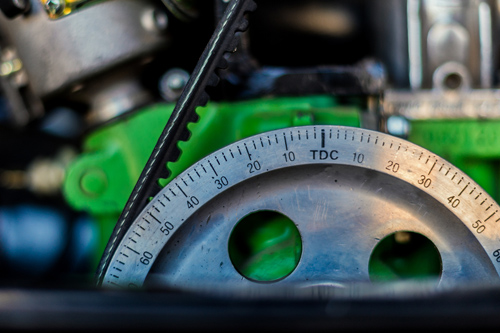Serpentine belt replacement as a general rule of thumb should be done around the 50,000 mile mark or as per your vehicle manufactures factory recommended maintenance schedule. The serpentine belt is what drives all of your vehicles accessories like the alternator, water pump, power steering pump, and air conditioning compressor. The serpentine belt is one long belt that gets routed around all the vehicles accessories that are to be driven.
Serpentine Belt Replacement|By The Numbers
To give you an idea of the kind of use a typical serpentine belt is exposed to consider that per 100 thousand miles a typical belt will have rotated well over 325 million engine revolutions which is approximately 80 million complete belt rotations. Knowing these numbers its easy to see why serpentine belt replacement is required at specified intervals. Serpentine belt replacement is an absolute must because this little guy sees some serious action and if it breaks it will leave you stranded because it drives everything on the engine. Clearly, this is one belt you do not want to neglect.
Serpentine Belt Replacement Inspection
The serpentine belt is exposed to a lot of extremes. Hot outside temperatures add to “under the hood temperatures” which in turn adds even more heat to the belt besides the normal rotational friction loads and this causes the serpentine belts to wear. These drive belts also see dirt, road grime, oil, water as well as other environmental contaminates along with wearing pulleys. Here’s a short little informative video on serpentine belt replacement.
All of these factors take their individual tolls on the serpentine belt and sooner or later if serpentine belt replacement is not performed all the individual tolls add up to the big kahuna toll and the serpentine belt will either break or slip excessively causing a whole host of other problems such as overheating and poor operational performance of all the drive accessories. One of the critical components that the serpentine belt drives is the water pump. The water pump circulates antifreeze or engine coolant from the engine to the radiator. If the serpentine belt breaks or even loses tension due to tensioner malfunction or even belt wear this can cause the water pump to not turn or pump the required volume of engine coolant which will in turn cause the engine to run hotter. Heat is the enemy in any internal combustion engine. There’s a chain reaction domino effect that takes place when serpentine belt replacement is neglected all of which is very bad for your vehicle.
Serpentine belt slippage may not be readily detected by any audible sound such as squealing or chirping. It may not even be detectable by serpentine belt examination. Sometimes it takes a reading the raw process values within the vehicles computer system. The idea is to perform serpentine belt replacement before problems begin. Serpentine belt slippage can also cause hard steering and braking. When performing serpentine belt replacement its a real good idea to have all the rotating pulleys checked for proper operation. Belt tensioners and free wheeling pulleys will wear out. When pulleys lock up tight and the engine is still trying to turn the serpentine belt bad things are going to happen such as destruction of the belt, engine overheating, draining the battery dead and total vehicle shut down, most likely leaving you stranded at the most inopportune time. We know. We’ve seen it happen. Regular serpentine belt replacement along with pulleys and tensioners will keep you happily motoring on down the road.
Regular serpentine belt replacement saves time and money.

